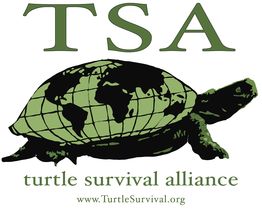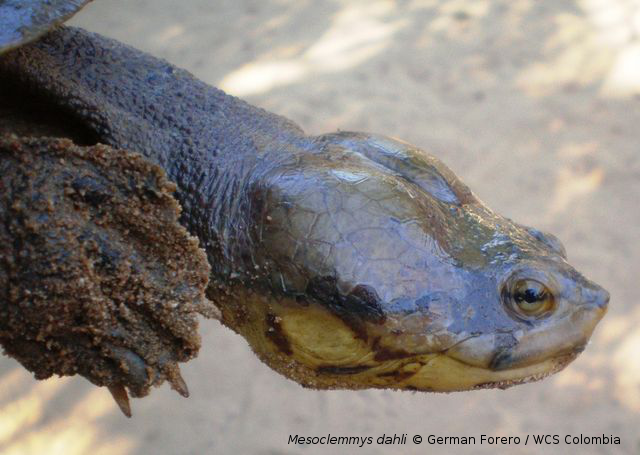cRios@wcs.org posted on agosto 29, 2012 16:26
|
Recognizing the key role of Colombia for the conservation of South American freshwater turtles and tortoises, and the imminent threat that many of these species face, the TSA launched a new Colombian program in July 2012. This program is possible due to a collaborative agreement between the Wildlife Conservation Society (WCS) and the TSA, and will expand a model partnership that has already proved effective in Myanmar and China. Colombia is widely recognized as a strategic location for turtle conservation in South America, and with 27 species, is considered one of the world’s turtle diversity hotspots, ranked 6th in species richness with three endemic species. In South America only Brazil has more species with 29. Located at the intersection of Central and South America, Colombia is biogeographically remarkable. It supports the highest number of chelonian families with seven. But Colombia’s diverse chelonian fauna is under threat from a range of human mediated factors including consumption and habitat loss and pollution.
|
 |
|
The program coordinator, German Forero-Medina, will be responsible for the implementation of specific actions identified in the Strategic Plan for the Conservation of Colombian Continental Turtles that was launched recently by Vivian Paez and the Colombian Herpetological Association (ACH). One of his primary responsibilities will be to ensure that chelonians are included in higher level discussions regarding new protected areas and the prioritization of species and research areas for funding consideration. He will also be tasked with expanding the potential for turtle conservation work in Colombia through training workshops, both on field research and captive management techniques. Perhaps the most daunting challenge for the program promises to be the development of a strategy for dealing with the thousands of turtles and tortoises confiscated annually, by strengthening the network of zoos and rescue centers and improving their capacity to deal with the ongoing problem of overcrowded facilities.
|
 |
|
On a species-specific level, the program aims to develop long-term monitoring programs for endemic species considered rare (Dunn’s mud turtle, Kinosternon dunni) and endangered (Dahl’s toad-head turtle, Mesoclemmys dahli). A leading priority species is the endemic Magdalena river turtle (Podocnemis lewyana). The WCS/TSA team will encourage coordination of the various research and conservation activities that will hopefully lead to a Recovery Plan for this critically endangered species.
Related links:
http://turtlesurvival.org/
|